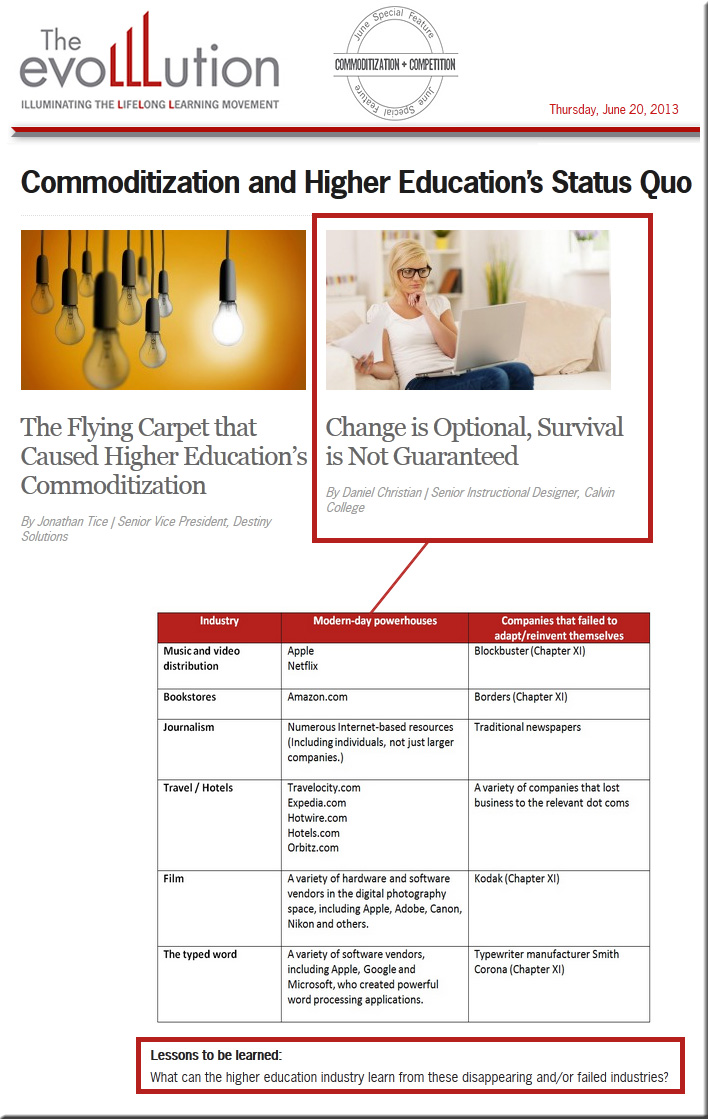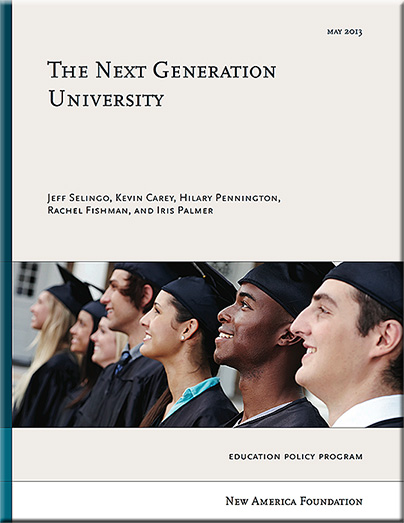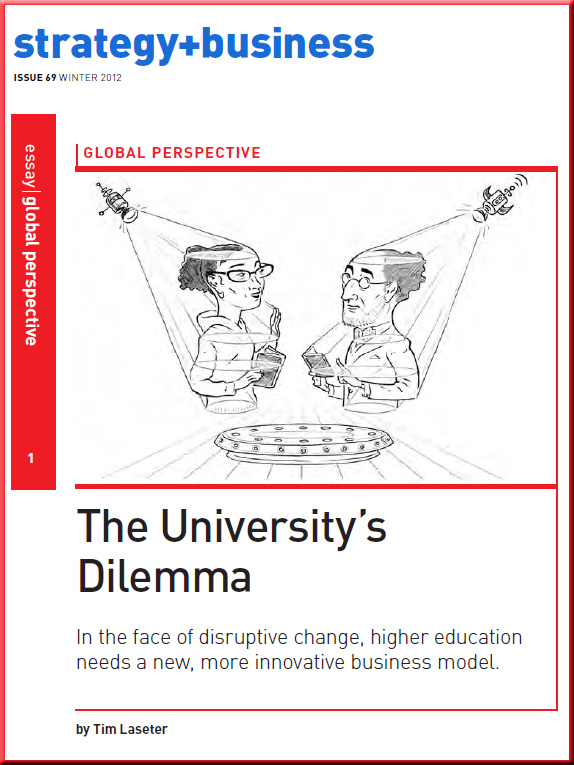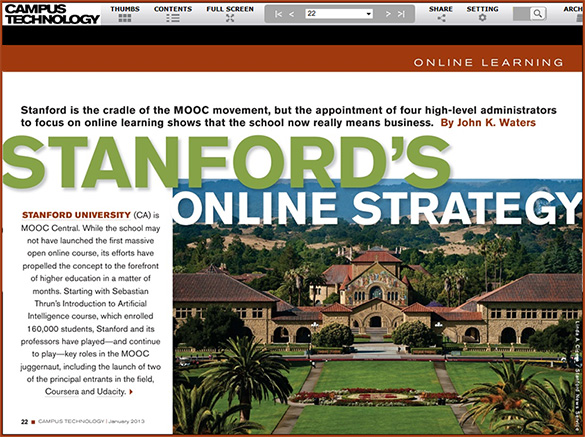Excerpt (emphasis by DSC):
The functional organization model makes it increasingly more difficult for IT on campus to be a meaningful partner and contributor to the strategic future of the University if and as it gets painted into the corner of being an expensive infrastructure cost center.
The alternative models to the functionally organized IT organization are many. The challenge for IT leaders is to cede a modicum of control and embrace the need to experiment in new, more porous, organizational models that facilitate and support the co-production of innovative solutions that meet the needs of higher education moving forward. Becoming a solutions-focused and internal consulting organization is at the core of what I take to be the opportunity for IT in higher education.
From DSC:
If other staff, faculty, students, and members of administration see everyone from the IT Department — and the IT Department as a whole — as only the folks who “install Microsoft Word and keep my PC running” — then we are in for some real trouble ahead.
Endeavors originating out of — or significantly enabled by the IT department — have the potential to create massive new revenue streams. For example, this can be seen in the growth of online learning these last few years and will most likely be true (at least in a significant part) for what MOOCs morph into.
Taking a cue from other industries that have gone to bat against the Internet, if you were the person in charge of picking members of the team that’s responsible for the future vision and strategies of your organization, who would you pick to be on your team?
.
















